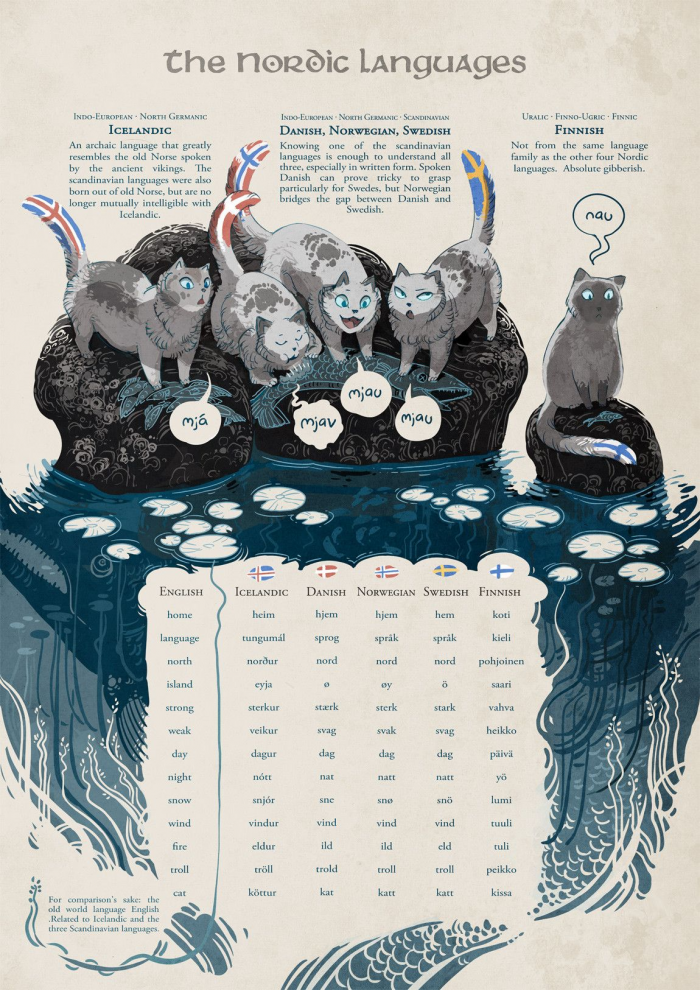
There are five official languages in the Nordic countries. They are Swedish, Danish, Norwegian, Icelandic and Finnish. In addition to these languages there are many other minority languages spoken in different parts of these countries.
Swedish (Svenska)
Swedish, or Svenska, is the official language of Sweden. It’s a North Germanic language that’s closely related to Danish and Norwegian (and English). Swedish has a long history as an official language–it was first written down in runes around 1,100 A.D., but these were replaced by Latin letters in the 16th century. Since then it has gone through many spelling reforms until eventually becoming something like its current form around 1900. The country has about 10 million native speakers worldwide; however, many more people speak some level of Swedish due to its popularity as an international business language as well as its use in Scandinavia and Finland (where Finnish is also spoken).
Danish (Dansk)
Danish is a North Germanic language spoken by 5 million people, most of them in Denmark. Danish is the official language of Denmark and one of two official languages in Greenland (the other being Greenlandic). It’s also an official language in the Faroe Islands, an autonomous territory under the sovereignty of Denmark. Danish has close ties with Norwegian and Swedish; all three are descended from Old Norse, which was spoken in Scandinavia during the Viking Age (8th-11th centuries CE). In fact, Danish was once considered to be merely an informal dialect of Norwegian until 1814 when it became its own distinct language after Norway was ceded from Sweden after losing a war against Russia and France.
Norwegian (Norsk)
Norwegian is a North Germanic language, spoken by about 5 million people. It’s the official language of Norway, and it was previously spoken in Denmark and Sweden as well. The Norwegian language has two main dialects: BokmÃ¥l (Bohemian) and Nynorsk (New Norwegian).
Icelandic (Islandska)
Icelandic (Islandska) is an Indo-European language, and a descendent of Old Norse. It’s spoken by about 300,000 people in Iceland and has become increasingly popular with tourists because it’s such a fun language to learn! The Icelandic alphabet consists of 32 letters: 29 consonants plus 3 vowels (a, e, i). These are pronounced much like their English counterparts: ‘b’ as in bed; ‘c’ as in cat; etc. There are also two additional letters which have no English equivalent–they sound like “th” but with your tongue further back in your mouth than when making the “th” sound.
Finnish (suomea)
Finnish is a Finno-Ugric language spoken by 5.5 million people, mostly in Finland and Sweden. Finnish is the official language of Finland, and it’s also one of two official languages in Estonia (the other being Estonian). Finnish has two written forms: standard Finnish and Karelian, which are both spoken in different parts of the country. Although these two written forms look quite different from each other at first glance–and both have their own grammar rules–they’re actually just varieties of one language!
These are the languages spoken in the Nordic countries: Swedish, Danish and Norwegian are North Germanic languages that belong to the same language family. Icelandic is also a North Germanic language but belongs to a different branch of this family called East Scandinavian or Old Norse. Finnish is not really a Scandinavian language at all; it’s an Uralic language spoken by people who live in Finland and parts of Russia (and some other places). We hope this article has helped you understand the languages spoken in the Nordic countries. It can be easy to get confused if you don’t know which one is which, but we hope that by now you’re feeling more confident about what each one sounds like. If not, then just remember: they all sound pretty similar!
